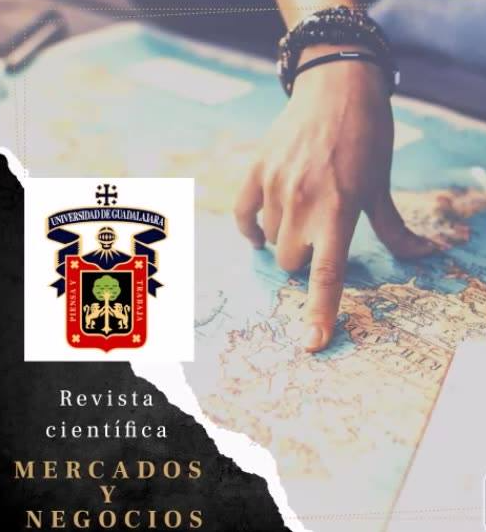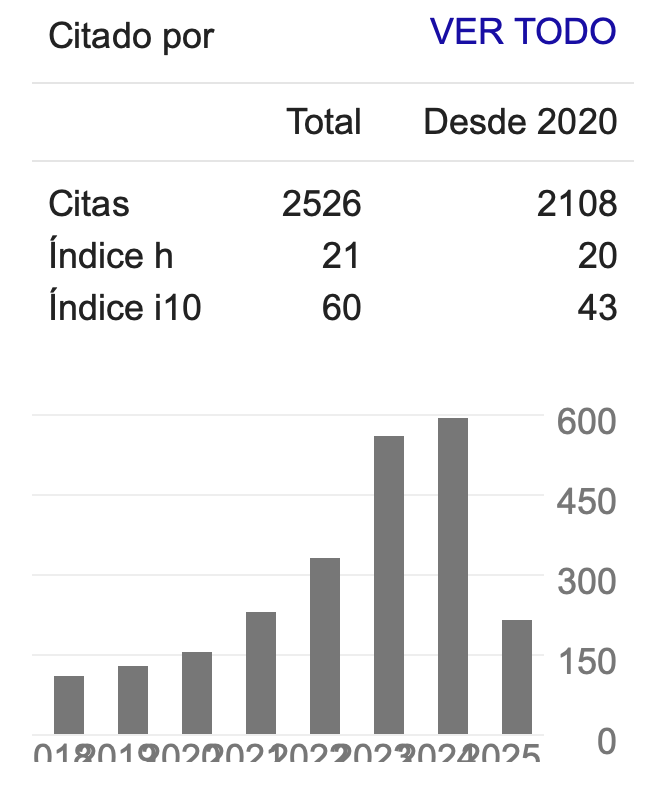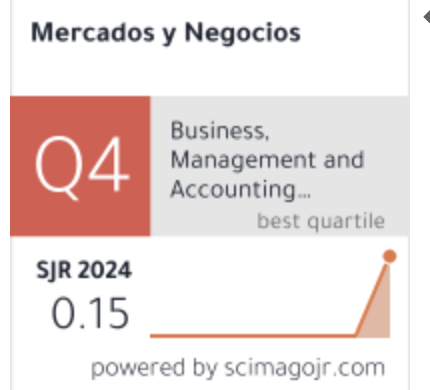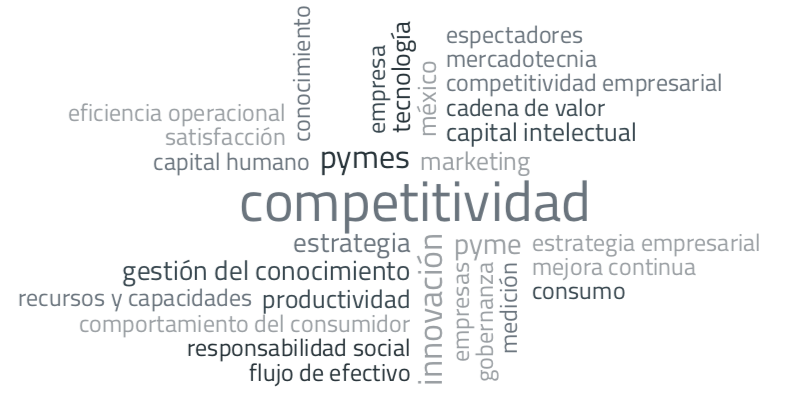The Empowerment through Femvertising: Reality or Myth?
DOI:
https://doi.org/10.32870/myn.vi46.7669Keywords:
Femvertising, Woman empowerment, Stereotypes, Communication, AdvertisingAbstract
This article studied female empowerment and stereotypes through femvertising. Empowerment and stereotypes were characterized by the roles generated by the sexual division of labor, developing a qualitative analysis through the perception of young Mexican women. The challenges of this advertising strategy were identified as the role of messages and content. The results suggested the construction of new stereotypes without modifying the patriarchal structure.References
Abitbol, A., & Sternadori, M. (2019). Championing Women’s Empowerment as a Catalyst for Purchase Intentions: Testing the Mediating Roles of OPRs and Brand Loyalty in the Context of Femvertising. International Journal of Strategic Communication, 13(1), 22-41. https/doi.org/10.1080/1553118X.2018.1552963
Abitbol, A., & Sternadori, M. (2016). You Act like a Girl: An Examination of Consumer Perceptions of Femvertising. Quarterly Review of Business Disciplines, 3(2), 117-138.
Asociación Mexicana de Agencias de Inteligencia de Mercado y Opinión (2022). Nivel Socio Económico AMAI 2022 Nota Metodológica. México: AIMA.
Becker-Herby, E. (2016). The Rise of Femvertising: Authentically Reaching Female Consumers. University of Minnesota, School of Journalism and Mass Comunication.
Bigné, J., & Cruz, S. (2000). Actitudes hacia los roles de género en la publicidad. Efectos sobre la imagen de empresa y la intención de compra. Cuadernos de economía y dirección de la empresa, (6),165-186.
Caro, A. (2014). Comprender la publicidad para transformar la sociedad. Cuadernos.Info, (34), 39-46. https://doi.org/10.7764/cdi.34.584
Chacón, P. (2008). La mujer como objeto sexual en la publicidad. Comunicar, 31, 403-409. https://doi.org/10.3916/c31-2008-03-026
Codeluppi, V. (2007). El papel social de la publicidad. Pensar la publicidad, 1(1), 149-155. https://dx.doi.org/10.5209/PEPU
Davidson, L. (January 12, 2015). Femvertising: Advertisers cash in on #feminism. The Telegraph. http://www.telegraph.co.uk
Gill, R., & Orgad, S. (2017). Confidence culture and the remaking of feminism. New Formations, (91), 16-34.
Gómez, B. (2016). Publicidad: ética y manipulación al servicio de las organizaciones. Sphera Publica, 2(16), 137-155
Iqbal, N. (October 12, 2015). Femvertising: how brands are selling #empowerment to women. The Guardian. Link: www.theguardian.com/lifeandstyle/2015/oct/12/femvertising-branded-feminism
Jalakas, L. (2017). The Ambivalence of Femvertising: Exploring the Meeting between Feminism and Advertising through the Audience Lens. In Askanius, T. (ed.), Excellent MSc Dissertations 2017, (13-80). Lund University.
Kapoor, D., & Munjal, A. (2019). Self-consciousness and emotions driving femvertising: A path analysis of women’s attitude towards femvertising, forwarding intention and purchase intention. Journal of Marketing Communications, 25(2), 137-157. https://doi.org/10.1080/13527266.2017.1338611
Krueger, R., & Casey, M. (2000). Focus Groups: A Practical Guide for Applied Research. SAGE Publications.
Lazar, M. (2006). Discover the power of femininity! Analyzing the global “power femininity” in local advertising. Feminist Media Studies, 6(4), 505-517. https://doi.org/10.1080/14680770600990002
López, M., & García, M. (2019). El Femvertising como estrategia de Comunicación y su impacto en mujeres entre 25 y 35 años en la ciudad de Quito–Ecuador. ComHumanitas: revista científica de comunicación, 10(2), 174-192.
Martínez, S. (2017). Procesos de empoderamiento y liderazgo de las mujeres a través de la sororidad y la creatividad. Dossiers Feministes, 22, 49-72. https/doi.org/10.6035/Dossiers.2017.22.4
Menéndez, M. (2020). Elaborar publicidad generadora de feminismo: hacia una propuesta metodológica sobre femvertising. Pensar la Publicidad, 14(2), 251. https://doi.org/10.5209/pepu.72131
Menéndez, M. (2019). Entre la cooptación y la resistencia: del Femvertising a la Publicidad Profem. Recerca Revista de pensament i anàlisi, 24(2), 15-38. https/doi.org/10.6035/Recerca.2019.24.2.2
McCracken, G. (1988). The long interview: Qualitative research methods. Sage.
Moral, M. (2000). Los nuevos modelos de mujer y de hombre a través de la publicidad. Comunicar, 14, 208-217.
Morgan, D. (1997). Focus groups as qualitative research. Sage.
Osuna, M. (2011). La mercantilización de los roles de sexo/género en la publicidad. In Mancinas, R. (Coord.) La mujer en el espejo mediático, II Jornadas Universitarias: sexo, género y comunicación. (196-208). Asociación Universitaria Comunicación y Cultura.
Ojeda, E. (2016). Femvertising: Publicidad con enfoque de empoderamiento. Memorias del XXI Congreso Internacional en Contaduría, Administración e Informática. México: UNAM
Pérez, M., & Almanzor, M. (2017). Femvertising: estrategias de empoderamiento femenino en la publicidad española. Investigaciones Feministas, 8(2), 337-351. https/doi.org/10.5209/INFE.54867
SheKnows Media. (2014). SheKnows unveils results of its Fem-vertising survey. SheKnows Media https://www.sheknows.com/living/articles/1056821/sheknows-unveils-results-of-its-fem-vertising-survey-infographic/
Stewart, D., Shamdasani, P., & Rook, D. (2006). Focus groups: Theory and practice. Sage.
Strauss, A. & Corbin, J. (1990). Basics of Qualitative Research: Grounded Theory Procedures and Techniques. Sage Publications.
Uresti, K., Orozco, L., Ybarra, J. & Espinosa, M. (2017). Percepción del machismo, rasgos de expresividad y estrategias de afrontamiento al estrés en hombres adultos del noreste de México. Acta universitaria 27(4). 59-68. https://doi.org/10.15174/au.2017.1273
WHO. (1986). La salud de los jóvenes: un desafío para la sociedad. Informe de un Grupo de Estudio de la OMS acerca de los jóvenes y la Salud para Todos en el Año 2000. Geneva: WHO. http://whqlibdoc.who.int/trs/WHO_TRS_731_spa.pdf
Wimmer, R., & Dominick, J. (2010). Mass media research: An introduction. Wadsworth Publishing.
Yániz, C. (2007). ¿Qué quiero ser de mayor? Creencias para impulsar un estilo de vida. In de Miguel, M. (Ed.), ¿En qué creen las mujeres? Creyendo y creando (pp.189- 219). Desclée de Brouwer.
Zeisler, A. (2016). We Were Feminists Once: From Riot Grrrl to CoverGirl®, the Buying and Selling of a Political Movement. Hachette UK.
Published
How to Cite
Issue
Section
License
Copyright (c) 2022 Tania Marcela Hernández Rodríguez, Irma Janett Sepúlveda Ríos

This work is licensed under a Creative Commons Attribution-NonCommercial 4.0 International License.
Mercados y Negocios by Department of Mercadotecnia y Negocios Internacionales. University of Guadalajara is licensed under a License Creative Commons Attribution-NonCommercial 4.0 International.
The author retains the copyright.








